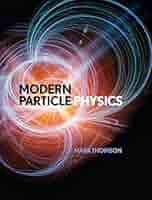
**The Seventeenth Century Revolution in Optics—Johannes Kepler’s Groundbreaking Contributions**
The onset of the seventeenth century heralded a significant evolution in the realm of optics, spearheaded by the influential Johannes Kepler (1571–1630). Primarily recognized as a pivotal figure in the foundation of modern astronomy, Kepler’s contributions to optics, articulated in his groundbreaking work *Ad Vitellionem Paralipomena, Quibus Astronomiae Pars Optica Traditur* (1604), would transform the field and redirect its emphasis toward establishing a physics-oriented approach to the study of light.
Kepler’s inquiries into optics were influenced by a rich tapestry of ideas that spanned centuries, drawing heavily from the thoughts of ancient, medieval, and Renaissance scholars. By the time he embarked on his studies, optics had transitioned from its philosophical roots into a domain enriched by mathematical and experimental inquiry. Nevertheless, Kepler’s 1604 treatise represented a crucial juncture: it not only consolidated existing knowledge but also contested established theories, presented significant theoretical innovations, and positioned optics on a course that would lead to its current integration within the discipline of physics.
### The Intellectual Legacy: Foundations of Optics Before Kepler
Kepler did not operate in a vacuum. His investigations into optics were profoundly influenced by the intellectual traditions of Greek antiquity, Islamic scholarship, and advancements during the Renaissance. Early accounts of atmospheric refraction, which involves the bending of light as it traverses different mediums, were documented by figures such as Ptolemy and Islamic scholars like Ibn al-Haytham. These foundational contributors, along with others including Tycho Brahe, defined the challenges that Kepler aimed to explore.
#### Refraction and Ptolemaic Traditions
Ptolemy’s work *Optics* investigated the bending of light through transparent materials and established a key model for atmospheric refraction that remained influential for centuries. Although he created basic tables and sought to measure refraction angles, his contributions lacked the mathematical precision that Kepler would later introduce.
Islamic scholars such as Ibn Sahl and Ibn al-Haytham built upon Ptolemy’s insights. While Ibn Sahl mathematically discovered the law of refraction (his findings did not gain immediate prominence), Ibn al-Haytham expanded Ptolemy’s work and provided a detailed examination of atmospheric refraction and vision. His *Kitab al-Manazir* (translated into Latin as *De Aspectibus*) served as a cornerstone for medieval European studies in optics, impacting scholars like Witelo, John Peckham, and Roger Bacon.
#### The Renaissance Context and Tycho Brahe
The Renaissance injected new perspectives into optical studies, including investigations of pinhole cameras and atmospheric phenomena. Tycho Brahe, under whom Kepler worked in Prague starting in 1600, made notable contributions to understanding atmospheric refraction, compiling measurement tables that laid the groundwork for Kepler’s optical inquiries. Tycho’s research highlighted how refraction affected celestial bodies’ appearances and provided an empirical quantification for Kepler’s investigations.
### Kepler’s Entry into Optics: Inspiration and Innovation
Kepler’s dedicated research into optics commenced around 1600, motivated by two significant influences: his access to Tycho Brahe’s refraction tables and a challenge related to a pinhole camera observed during a solar eclipse. These events triggered his ambition to transform the field of optics, culminating in *Astronomiae Pars Optica* (“The Optical Part of Astronomy”).
In this foundational work, Kepler addressed a range of key optical issues and achieved groundbreaking insights. Among these were atmospheric refraction, the phenomenon of the camera obscura, and the mechanisms behind human vision.
#### Atmospheric Refraction: Pushing the Horizons
Atmospheric refraction has long captivated optical scientists, first acknowledged by Pliny the Elder and subsequently explored in antiquity and Islamic texts. Kepler, using Tycho’s models and refraction tables, articulated his own explanation of this phenomenon. While Tycho’s framework posited a static boundary between air and ether, Kepler adopted a more sophisticated perspective, suggesting that the refractive characteristics of air vary based on altitude above Earth.
Kepler also made pivotal observations that changed the understanding of refraction. He noted that the setting sun appeared elliptical rather than circular due to atmospheric distortion, a detail often overlooked. Although he underestimated the height of the Earth’s atmosphere—estimating it to be about 3.7 kilometers—his focus on the dynamic nature of refraction provided essential groundwork for subsequent developments.
#### Decoding the Camera Obscura Problem
As part of his quest for a deeper comprehension of optics, Kepler resolved the enduring “pinhole camera problem” that had confounded previous scholars. The challenge revolved around understanding why images formed through a pinhole were distorted—specifically, why the image size was